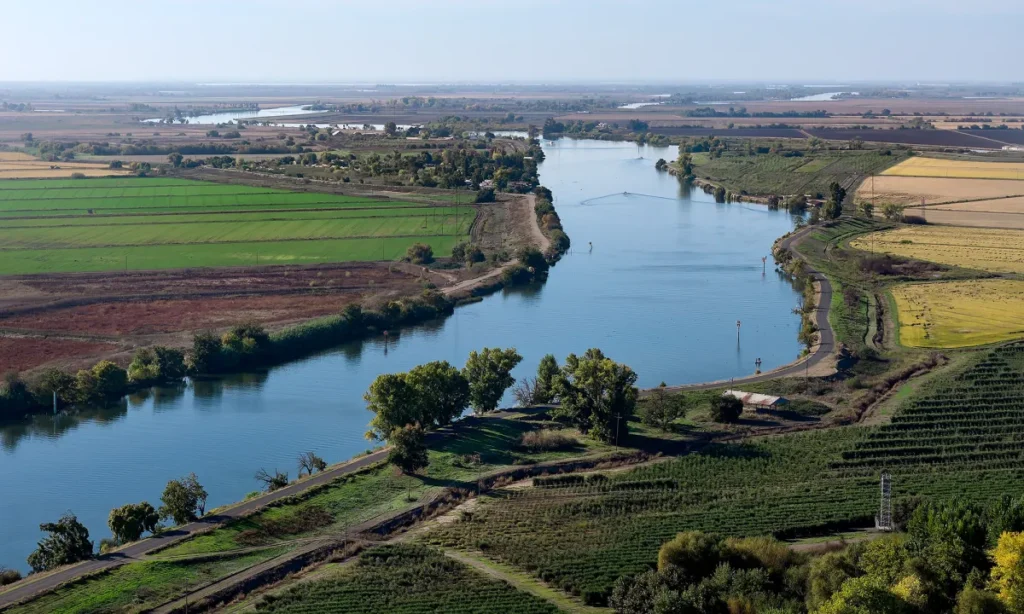Share
SACRAMENTO — California regulators on Tuesday set new rules about how much water can be taken from the state’s largest rivers, angering water agencies for restricting how much they can take and environmental groups for not making those limits low enough to protect endangered species.
Most of California’s water comes from snow that melts in the Sierra Nevada and flows through a series of rivers and streams to the San Francisco Bay. The state has two complex systems of canals, dams and reservoirs that deliver and store the water. The state operates one system that mostly provides drinking water for 27 million people while the federal government runs the other system that mostly provides water for the state’s $50 billion agriculture industry.
Historically, the federal government has set the rules for both systems in cooperation with state officials. But this year, California says the federal government’s rules do too much harm to the environment and have sued to block them.
Tuesday, California finished its own rules for the State Water Project. But those rules have angered both water agencies and environmental groups for different reasons and will likely be challenged in court.
The federal government’s rules do not limit how much water can be pumped out of the rivers during storms or months when there is a lot of rain. The state’s rules do, limiting agencies at pumping no more than 6,250 cubic feet per second. One cubic foot per second equals more than 1.5 million gallons.
The Purpose of the Pumping Limits Is to Protect Four Endangered Species of Fish
That means different rules for state and federal water agencies that are both taking water from the same source. The Metropolitan Water District of Southern California, a regional wholesaler that provides water to 26 public agencies who deliver it to nearly 19 million people, is already considering a lawsuit.
“We have to put restrictions and not take water, but our neighbor is free to take it,” said Jeffrey Kightlinger, general manager for the Metropolitan Water District of Southern California. “Obviously we want to work closely with the Gov. Gavin Newsom administration, but we’re pretty disappointed by this result. We don’t think it’s based on sound science and it’s going to be hard for us just to let it go.”
The purpose of the pumping limits is to protect four endangered species of fish: The delta smelt, longfin smelt and both winter-run and spring-run chinook salmon. If the water agencies pull too much water from the rivers too fast, the fish aren’t strong enough to swim away and they get sucked up into the pumps and killed.
But the state’s new pumping limits are 25% higher than the old limits, which environmental groups say are too high and warn will put the endangered species in even more peril. Some scientists say the delta smelt are already “effectively extinct” because there are too few of them left to monitor.
“I think that the Newsom administration is employing some cold, political triangulation and their position here is that, ‘We don’t have to protect our endangered species, we don’t have to protect water quality in the delta or the San Francisco Bay estuary fisheries, we just have to be better than Trump,” said Jon Rosenfield, senior scientist for San Francisco Baykeeper.
The State Water Project Removes More Than 3 Million Acre-Feet of Water per Year
California Department of Fish and Wildlife Director Chuck Bonham says the old pumping limits were set more than 10 years ago and were “somewhat arbitrary.” He said state scientists now believe the new limits are safe to keep fish from being sucked into the pumps, which environmental groups dispute.
Bonham also noted the rules let the state store blocks of water during wet months they can release in the spring and summer to help the fish. The rules allow for the state to release 150,000 acre feet of water in the spring and another 100,000 acre feet in the summer. One acre foot of water is more than 325,000 gallons, the amount of irrigation water that would cover one acre to a depth of one foot.
The State Water Project removes more than 3 million acre-feet of water per year.
“I would ask that all those parties just take a breath and think long term,” Bonham said. “If you really think about the long term stability, the long term needs of the species here that are involved, this permit is pretty creative. And it’s going to do right by both water supply and environmental protection.”
RELATED TOPICS:
Categories

Trump Signs Order Aimed at Curbing State AI Laws


















